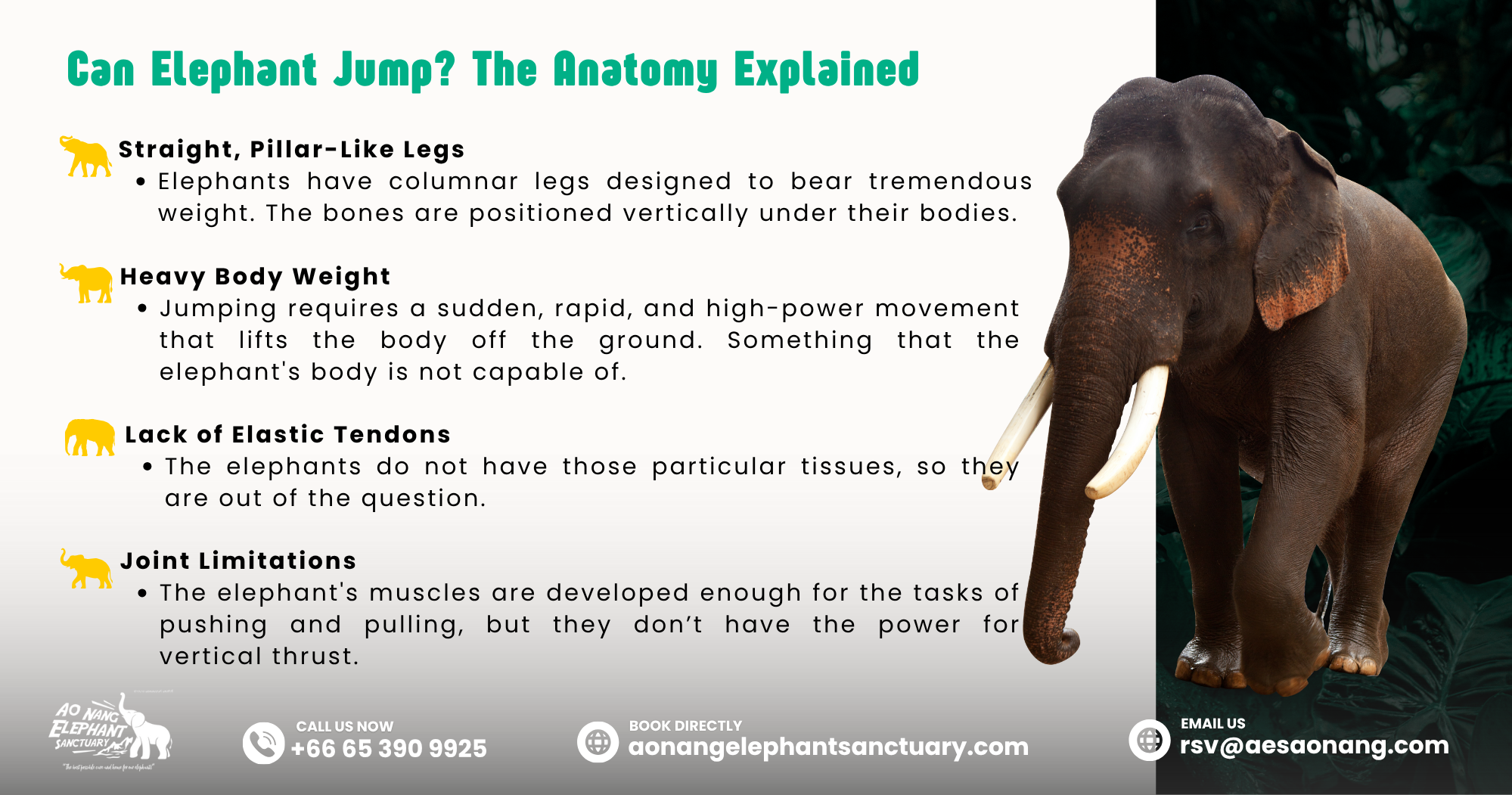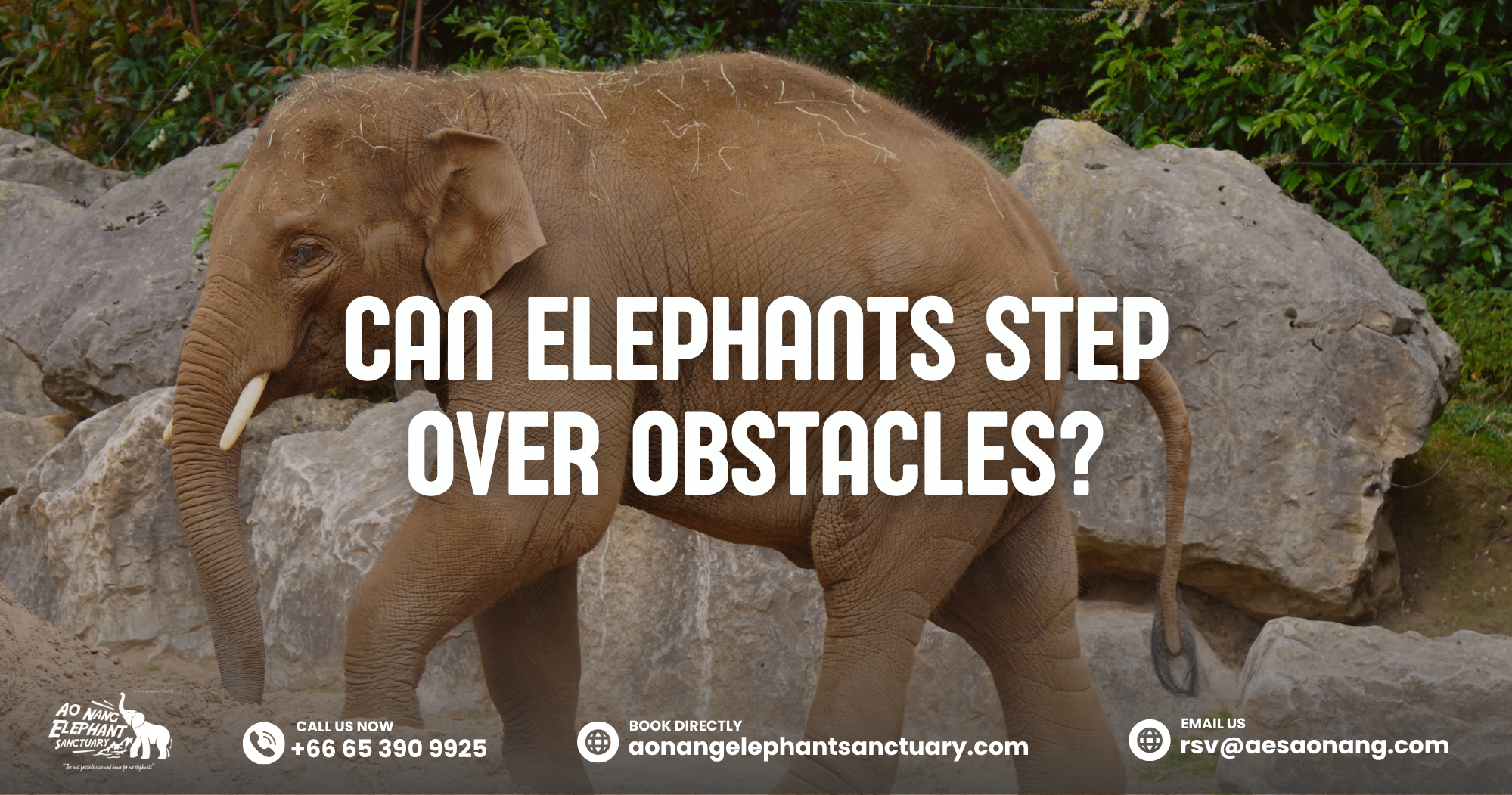Elephants are the most interesting and mind-blowing animals. They are huge, powerful, and unbelievably nimble for their mass. What people have been wondering, though, for quite a long time is this: Can elephant jump?
The brief response is that elephants are not able to jump. Nevertheless, the actual explanation about why they can’t is quite a different story; it uncovers not only their body structure but also their evolution. We should dive into the organs, myths, and stunning features of elephants to find out how they become strong without having the ability to leap.
The Simple Answer
Other than humans, elephants are the only mammals that cannot jump. Jumping means going off the ground with all four feet simultaneously, and elephants have never done it. Even when they are running or charging, they always have at least one foot on the ground. Thus, elephants are the only terrestrial mammals not to have a moment when all limbs are off the ground simultaneously.
Indeed, it is not a defect in any way. On the contrary, it is a clever evolutionary adaptation that aligns with their gigantism and the generality of the anatomy.
Why Can’t Elephants Jump? The Anatomy Explained
To prove that an elephant cannot jump, we have to analyze its physical makeup. Elephants are not the kind that can leap or jump, as they do not have the necessary power and stability. Their leg bones have a different structural plan from those of the jumping animals.
- Straight, Pillar-Like Legs— Elephants have columnar legs designed to bear tremendous weight. The bones are positioned vertically under their bodies, like pillars supporting a building. The storage of the weight against the ground and the mobility of the carrying limbs become a problem of distribution. Thus, the standing position becomes very stable but also quite inflexible.
- Heavy Body Weight—An adult elephant can weigh from 2,700 to 6,000 kilograms. Jumping requires a sudden, rapid, and high-power movement that lifts the body off the ground. Accordingly, this large weight would need the muscle force to be doubled several times over—something that the elephant’s body is not capable of.
- Lack of Elastic Tendons—There are animal species that are capable of jumping to great heights using their elastic tendons. For instance, kangaroos and various kinds of antelopes. The elephants do not have those particular tissues, so they are out of the question.
- Joint Limitations—The joint of the elephant’s leg is not deep enough to allow its lift from it. The elephant’s muscles are developed enough for the tasks of pushing and pulling, but they don’t have the power for vertical thrust.
Why Elephants Don’t Need To Jump
In the wild, animals usually jump to escape their predators or to move over some obstacles. An elephant, nevertheless, is not a creature that requires this skill to survive.
- Size and Power—Due to its enormous size, an elephant is almost free from the threat of natural predators. The likes of lions and tigers could rarely be a danger to an adult elephant. What’s more, the elephant’s power and the protection of the herd are more than sufficient to ensure their safety.
- Living Place Benefit—The elephant is a dweller of open savannas, grasslands, and forests. Such lands do not demand one to jump over the cliffs or the ravines that are too deep.
- Saving Energy—Leap requires a great amount of energy. Since living on hundreds of pounds of food daily, a creature like that has to be energy-saving.
The Myth Of Elephants Jumping
After seeing movies or animations, people are inclined to believe that elephants can jump, and they do it dramatically. These kinds of portrayals are usually exaggerated just for fun. In fact, not even baby elephants make a jump. Calves may be playful and full of life, but rather than jumping, they do running, rolling in mud, or splashing in water.
Some people might say that when an elephant is surprised or playful, it “lifts off” a little. However, if you look very closely, you see that at least one foot is always on the ground.
Can Elephants Step Over Obstacles?
Though they are unable to jump, elephants can move through difficult ground. With their power and flexibility, they can step over big stones, fallen trees, or small trenches. Before stepping, their trunks help them check the surface, and thus, they ensure their safety.
Elephants are good climbers, too, on gentle slopes or hills. Their strong muscles and firm footing enable them to handle tough paths, especially in the woods or mountains.
Comparing Elephants To Other Non-Jumping Animals
Besides elephants, there are other giant animals that cannot jump, such as rhinos, hippos, and sloths, i.e., they too cannot lift all four feet off the ground at once. What is the connection? Weight and body structure.
Nevertheless, the difference is that elephants still move with great agility. They are capable of turning quickly, moving backwards smoothly, and even doing complex movements with their trunks and legs. Their equilibrium is remarkable for such a large being.
Can Elephant Jump? Ao Nang Sanctuary Shows The Beauty Of Stillness
So, can elephant jump? The answer is no, but they certainly don’t have to. Their magnitude, physiology, and evolution have, in fact, bestowed upon them something way beyond that—incomparable strength, smarts, and steadiness. For elephants, jumping is not a sign of agility or power; in fact, it is their ability to be purposeful, elegant, and self-assured in their movement that is characteristic of them.
Such a fact in each of their steps when you go to Ao Nang Elephant Sanctuary. Watching them walking in the wilderness, serene and undisturbed, is like a reminder to us that strength does not necessarily have to be speed or flight—sometimes it is just about being grounded.
Make a plan to visit Ao Nang Elephant Sanctuary now and see how beautiful the elephants can be when they are most natural—mighty, tranquil, and, of course, no jumping.
Reserve your spot now to get a chance to meet Asian elephants!
- Phone: +66 65 390 9925
- Email: [email protected]
- Book directly at aonangelephantsanctuary.com





